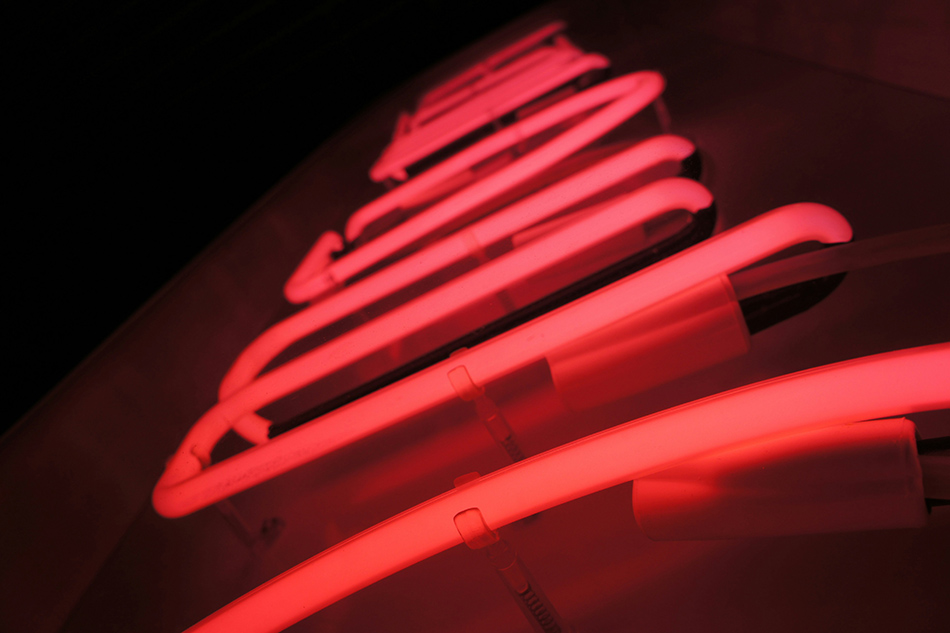Time:2025-05-22
The demand for adaptive, immersive lighting has propelled RGB color-changing neon tube systems to the forefront of architectural, retail, and entertainment design. These versatile systems combine the nostalgic allure of neon with cutting-edge technology, enabling real-time customization of ambiance, branding, and interactive experiences. This article explores the transformative potential of RGB neon, its technological underpinnings, and strategic applications for businesses seeking to captivate audiences in an increasingly visual world.
The Evolution of Neon: From Static to Dynamic
Traditional neon lighting, while iconic, offered limited flexibility. RGB color-changing systems revolutionize this space by:
Unlimited Color Palettes: Seamless transitions across millions of hues to match events, seasons, or brand campaigns.
Scene Synchronization: Integration with music, video content, or live performances for synchronized light shows.
Mood Adaptation: Shifting from energizing reds for product launches to calming blues for wellness spaces with a single system.
This adaptability makes RGB neon indispensable for industries requiring dynamic visual storytelling.

Core Technologies Powering RGB Neon Systems
Modern systems leverage advancements that enhance performance and user control:
LED Hybridization: Combining neon’s aesthetic with LED efficiency, enabling vibrant colors and reduced energy consumption.
Wireless Control Hubs: App-based or DMX-controlled platforms for adjusting colors, brightness, and effects remotely.
Smart Ecosystem Integration: Compatibility with IoT devices (e.g., voice assistants, motion sensors) for automated adjustments.
Durable Encapsulation: Shatterproof silicone or acrylic tubes resistant to UV exposure, moisture, and physical impacts.
These innovations ensure reliability across indoor and outdoor environments while maintaining visual fidelity.
Strategic Applications Across Industries
Retail & Hospitality:
Window Displays: Eye-catching animations to attract foot traffic during sales or holidays.
Themed Dining: Color shifts aligning with menu courses (e.g., warm tones for appetizers, cool hues for desserts).
Entertainment Venues:
Nightclubs: Beat-synced lighting that amplifies DJ performances and crowd energy.
Theaters: Subtle transitions enhancing dramatic moments in plays or concerts.
Corporate Spaces:
Office Branding: Dynamic lobby installations reflecting company values (e.g., green for sustainability, purple for innovation).
Event Stages:
Real-time color adjustments during product demos or keynote speeches.
Trends Driving RGB Neon Adoption in 2024
Hyper-Personalization: AI-driven systems that analyze user preferences or biometric data to auto-generate lighting schemes.
Sustainable Practices: Solar-powered RGB neon for outdoor festivals or carbon-neutral corporate events.
Interactive Public Art: Installations where passerby movements or smartphone inputs alter color patterns.
Health-Centric Design: Circadian rhythm-aligned lighting in workplaces to boost productivity and well-being.
Key Considerations for Implementation
Control Ecosystem Compatibility: Ensure systems integrate with existing smart home or venue management platforms.
Scalability: Modular designs that expand from small retail displays to large architectural facades.
Maintenance Planning: Opt for suppliers offering cloud-based diagnostics for proactive issue resolution.
Cultural Relevance: Tailor color schemes to regional symbolism (e.g., red for luck in Asian markets, blue for trust in finance).
Overcoming Industry Challenges
Complexity Perception: Simplify user interfaces with pre-programmed “scene modes” for non-technical users.
Light Pollution Mitigation: Use directional lighting and diffusers to minimize glare in urban settings.
Budget Constraints: Highlight ROI through energy savings, customer retention metrics, and social media engagement.
Case Studies: RGB Neon in Action
Fashion Retailer Success: A Milan boutique used RGB neon to cycle colors matching runway collections, increasing in-store dwell time by 35%.
Stadium Spectacle: A sports arena installed RGB-lit tunnels that shift to team colors as players enter, boosting fan engagement.
Smart Home Integration: A luxury hotel chain synced hallway neon with guest room preferences via app, earning industry innovation awards.
Future Innovations in RGB Neon Technology
Holographic Layering: Merging physical neon with 3D projections for multi-sensory brand experiences.
Self-Powered Systems: Kinetic energy harvesting from foot traffic or ambient vibrations.
Blockchain-Backed Customization: NFT-linked designs allowing users to “own” and display digital art via RGB neon.
Conclusion
RGB color-changing neon tube lighting systems are redefining illumination as a dynamic, interactive medium. By blending aesthetic versatility with smart technology, businesses can craft environments that engage, inspire, and adapt to evolving needs. For designers and brands, the future lies in leveraging these systems not just as lights, but as storytellers—transforming spaces into living narratives that resonate deeply with audiences.
To maximize impact, prioritize partnerships with suppliers who innovate at the intersection of art, technology, and sustainability. In doing so, your lighting will not only illuminate—it will communicate, captivate, and convert.